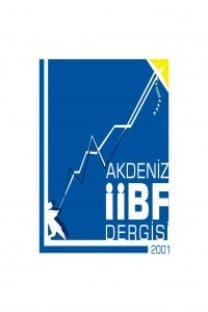Beklenen ve Beklenmeyen Para Politikası Kararlarının Hisse Senetleri Fiyatları Üzerindeki Etkileri
Para politikası kararlarının hisse senetlerinin fiyatları üzerinde etkili olduğuna dair çok sayıda çalışma bulunmaktadır. Ancak Türkiye’de beklenen ve beklenmeyen para politikası kararlarının hisse senedi piyasasına ilişkin bir herhangi bir çalışma mevcut değildir. Bu amaçla bu çalışmada Edelberg ve Marshall (1996) tarafından analiz edilen çalışmayı takiben para politikası faiz kararları, beklenen ve beklenmeyen para politikası kararları şeklinde ayrıştırılarak hisse senetleri fiyatları üzerindeki etkileri incelenmiştir. En küçük kareler yöntemi ile yapılan analizden elde edilen bulgular hem beklenen hem de beklenmeyen faiz kararlarının hisse senetlerinin getirisini yakından etkilediğini göstermiş, beklenmeyen faiz kararlarının etkisi beklenene kıyasla daha yüksek bulunmuştur. Bu bulgu Türkiye’de rasyonel bekleyişler hipotezinin hisse senedi piyasasında tam olarak geçerli olmadığını, insanların kısmen de olsa rasyonel karar verdiklerini ancak sürprizler karşısında çok da yapacak birşeyleri olmadığını göstermiştir.
The Effect of Expected and Unexpected Monetary Policy Decisions on Stock Prices
There are lots of studies accept that the monetary policy decisions have effects on stock prices. But there is no any work on Turkish economy that focusing on expected and unexpected monetary policy decisions on stock prices. In this regard, following Edelberg and Marshall (1996) we decomposed monetary policy interest rate decisions as expected and unexpected monetary policy decisions and investigated the effect of them on stock prices. The findings from ordinary least squares method showed that both expected and unexpected interest rate decisions have closely impacts on return of stocks. Moreover, the effects of the unexpected decisions have greater impacts on the expected ones. This finding implies that the rational expectations hypothesis is not completely valid in stock markets and economic agents’ decisions are only partly rational and they have nothing to do when there is some surprises.
___
- Andersson, M. (2007). Using Intraday Data to Gauge Financial Market Responses to FED and ECB Monetary Policy Decisions, ECB Working Paper, No. 726
- Bernanke, B. & Kuttner, K. (2005). “What Explains the Stock Market’s Reaction to Federal Reserve Policy?”, The Journal of Finance 60(3)
- Bohl, M.T., Siklos, P.L. & Sondermann, D. (2008). “European Stock Markets and the ECB's Monetary Policy Surprises”, International Finance 11(2)
- Boyd, J.H., Jagannathan, R. & Hu, J. (2001). “The Stock Market’s Reaction to Unemployment News: Why Bad News Is Usually Good For Stocks”, NBER Working Paper 8092
- Craine, R. & Martin, V. (2003). “Monetary Policy Shocks and Security Market Responses”, Unpublished Manuscript, University of California at Berkeley
- Duran, M., Özcan, G., Özlü, P. & Ünalmış, D. (2012) “Measuring the impact of monetary policy on asset prices in Turkey”, Economics Letters 114
- Duran, M., Özlü, P. & Ünalmış, D. (2010) “TCMB Faiz Kararlarının Hisse Senedi Piyasaları Üzerine Etkisi”, Central Bank Review, 10(2)
- Edelberg, W., & Marshall, D. (1996). Monetary policy shocks and long-term interest rates. Federal Reserve Bank of Chicago Economic Perspectives, 20, 2–17.
- Fair, R.C. (2006). “Events That Shook the Market”, The Journal of Business 75(2)
- Kuttner, K.N. (2001). “Monetary Policy Surprises and İnterest Rates: Evidence from the Fed Funds Futures Market”, Journal of Monetary Economics, 47 (3)
- Küçükkocaoğlu, G., Ünalmış, D. & Ünalmış, İ. (2013). “How do banks' stock returns respond to monetary policy committee announcements in Turkey? Evidence from traditional versus new monetary policy episodes”, Economic Modelling 35
- Rigobon, R. & Sack, B. (2002). “The Impact of Monetary Policy on Asset Prices“. Finance and Economics Discussion Series 2002-4. Board of Governors of the Federal Reserve System
- Rigobon, R., & Sack, B. (2003). “Measuring the Reaction of Monetary Policy to the Stock Market”, Quarterly Journal of Economics , 118
- ISSN: 1302-9975
- Başlangıç: 2001
- Yayıncı: Akdeniz Üniversitesi
Sayıdaki Diğer Makaleler
Mutluluğun Türkiye’deki Belirleyenlerinin Zaman İçinde Değişimi
Türkiye’de Ev Dışı Gıda Tüketiminde Kuşak Etkisi: Double Hurdle Yaklaşımı
Mehmet Fatih TRAŞ, Seda ŞENGÜL
Beklenen ve Beklenmeyen Para Politikası Kararlarının Hisse Senetleri Fiyatları Üzerindeki Etkileri
Elektronik Ağızdan Ağıza İletişimin Pazarlama Literatüründeki Önemi
Meltem Yetkin ÖZBÜK, Şafak AKSOY
Türkiye’de Bölgesel Farklılaşmadan Orta Gelir Tuzağına Çıkarımlar
